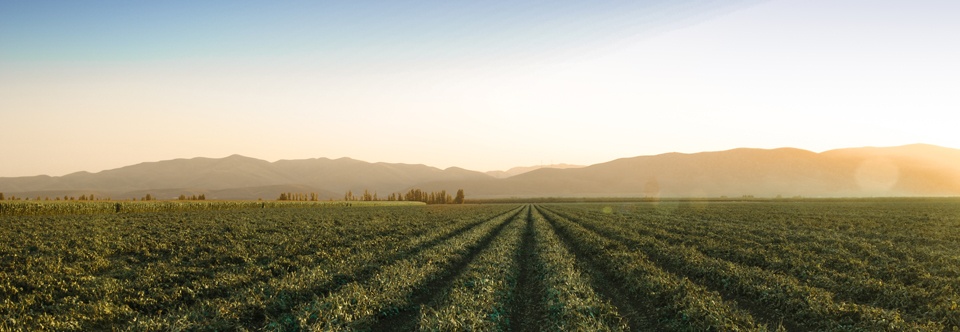There has been a lot of attention in the media this week to the subject of groundwater overdraft and subsidence, or settling of the land when groundwater is pumped. While this is an extremely important issue for California, people should remember that not all overdraft is the same and “one size fits all” solutions are a mistake. There are three geographic regions attracting the most attention lately: the foothills in eastern Stanislaus County, land near the San Joaquin River south east of Los Baños and the Westside between Patterson and Bakersfield.
Stanislaus County water officials have observed declining groundwater levels due to increased farmland development in the foothills east of Oakdale, Turlock and Modesto. Improvements in high-efficiency drip and micro irrigation systems make it possible to grow crops on land what was once limited to rangeland cattle grazing. Urbanization on the Valley floor means that there are fewer acres of prime farmland than there were a few decades ago. One look at the sprawl of communities along the Highway 99 corridor confirms this. Increased profitability of orchard and vineyard crops has also had the effect of attracting farmers to the foothills onto land once considered “marginal” for farm production. The good news is that local water leaders recognize the issues facing the region, have taken actions to mitigate groundwater impacts and are continuing to discuss ways to reduce widespread impacts. Locals deciding what is best for the local area was the basis for The “Wright Act,” a piece of legislation authored in 1887 by Modesto Assemblyman C.C. Wright. The Wright Act allowed farming regions to elect leaders, form irrigation districts, and collect tax revenue to build water delivery systems. Turlock Irrigation District was the first irrigation district formed under The Wright Act and it will play a role, along with its neighbor to the north, Modesto Irrigation District and others in deciding how to resolve today’s water supply issues, including groundwater overdraft.
In the center of Merced County lies the cradle of California’s modern irrigation systems. Canals built in the 1850’s by Henry Miller, a German immigrant, butcher, cattle rancher and farmer, are still in use today. Miller’s claim to water on the San Joaquin River was one of the first examples of rights exercised under California system of water rights, which were based originally in English Common Law. In recent times, deep groundwater pumping has caused subsidence in the area of the Henry Miller-era Sack Dam. Districts that were formed out of the original land holdings by Henry Miller are working with today’s landowners to shift to shallower pumping and replacing groundwater with surplus flows from the river every few years. This local solution is helping return the balance between surface water and groundwater and is expected to halt subsidence in the future.
On the San Joaquin Valley’s Westside subsidence isn’t a new problem. It was first observed in the early 20th Century. Part of the solution was to direct surface water deliveries from the federal Central Valley Project (CVP) and State Water Project to irrigate farmland in the region known as the joint-use facilities–California Aqueduct or San Luis Canal. . According to the U.S. Geological Survey, “Groundwater pumping caused widespread compaction and resultant land subsidence between 1926 and 1970, locally exceeding 26 feet. Surface-water imports in the early 1970s resulted in decreased pumping, reduced compaction rate, and a steady recovery of groundwater levels. However, lack of imported surface-water availability during 1976-77, 1986-92, and 2007-09 caused groundwater-pumping increases, renewed compaction, and declines in water levels to near-historic lows.”
It is no surprise that one of the consequences of federal Endangered Species Act regulations is a return to groundwater. CVP south-of-Delta surface water deliveries have declined by 40, 60 and 90 percent in recent years. Farmers have shifted to higher-value permanent crops to offset losses. Fallowing land devoted to annual crops, such as tomatoes, peppers, cotton, lettuce and others allows farmers to use what little water remains on land dedicated to permanent crops that will return enough income to stay in business. The irony is that current overdrafting due to ESA regulatory restrictions brings us right back to one of the primary reasons why the joint-use facility was built.
There is no shortage of advocates pushing for State-controlled groundwater pumping regulations. But solutions in two of these cases, Stanislaus County’s eastside and Merced County near Sack Dam are being handled effectively at the local level. The third example, the Westside, could be solved if federal fishery agencies exercised the discretion they have under the Endangered Species Act to deliver sufficient water to keep farmers in business without relying too heavily on groundwater. The “one size fits all” regulatory approach we usually see from Sacramento is unnecessary and further removes local decision makers from exercising their knowledge of local conditions to find local solutions that work for everyone.


